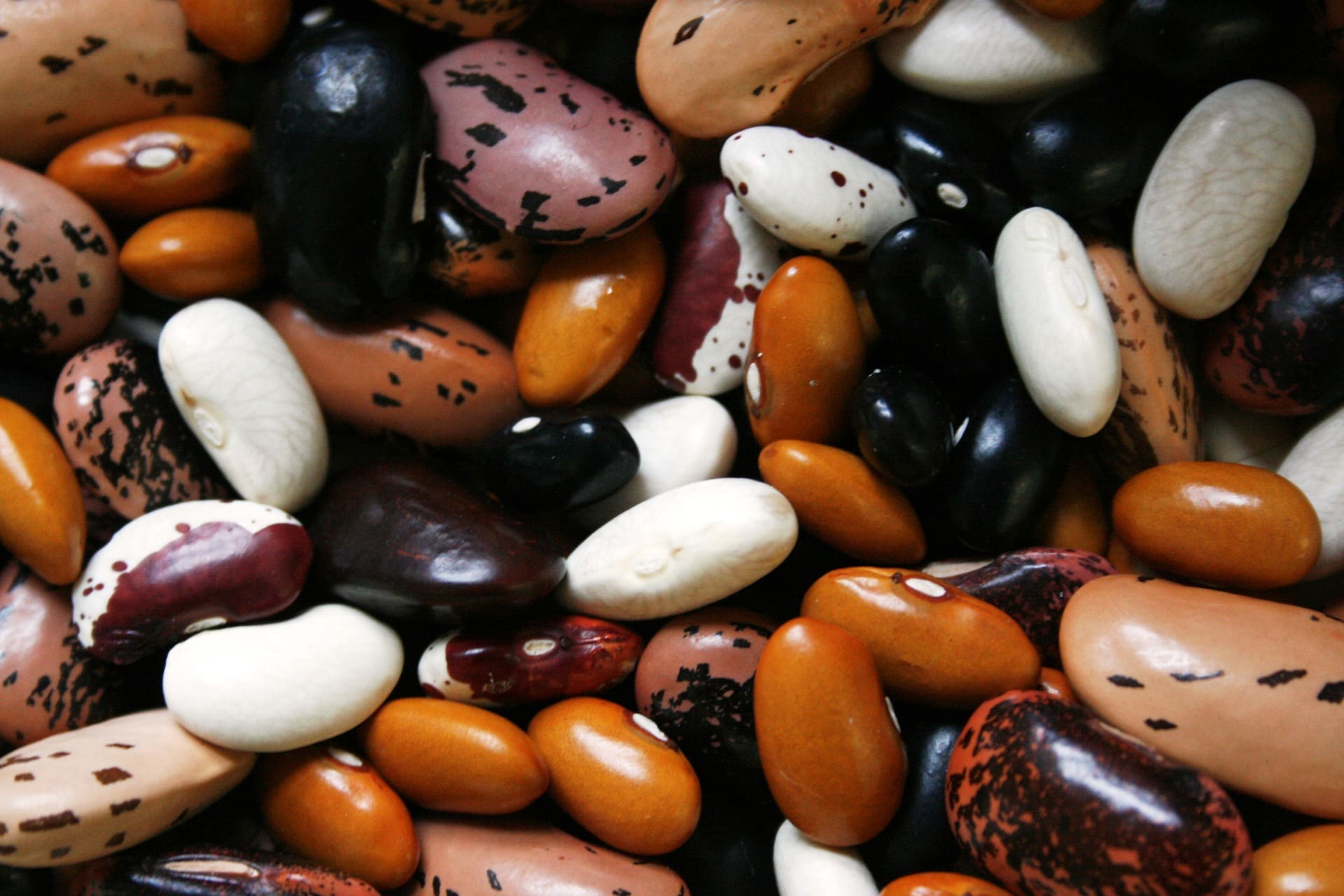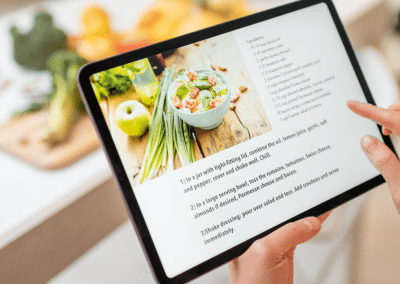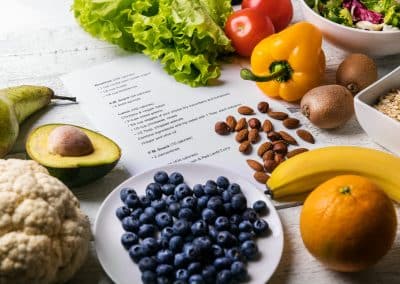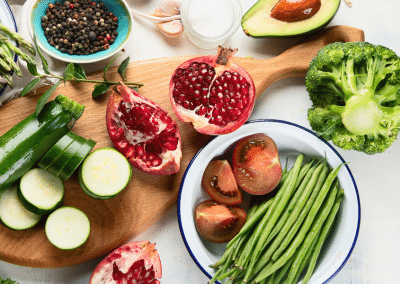Did you know that the US Dietary Guidelines recommends eating ~3 cups of beans a week? They are a great source of fiber and folate (heart health), resistant starches (prebiotic), and immune-boosting phytochemicals and minerals (including iron, zinc and selenium)!
Did you also know that cooking your own dry beans is a simple 5-10 minute process? Not only is it less expensive to cook them this way, but it also saves time and energy in the long run because it is easier to make large quantities. So start stocking up on dry beans because we have everything you need to know about preparing and cooking them right here!
Before you start prepping and cooking your beans, here are some helpful conversions:
- 1 cup dry beans yields 2 – 3 cups cooked beans
- 15 oz can of beans = 1.5 cups cooked beans
- One pound dry beans = 2 cups dry beans or 6 cups cooked beans
Sorting & Rinsing
Spread beans, lentils, or peas on a wide flat surface (baking sheets work great) and remove any pebbles, twigs, or shriveled beans. Rinse in a colander or wire strainer to remove any dirt or debris. 2 rinses works great! (fun project for kids to help with!)
Soaking
This helps remove gas-producing sugars and decreases cooking time. Always remember to discard soaking water afterward and use fresh water to cook your beans.
There are 2 main methods:
1. Slow Soak: add 2 cups of water for every 1 cup of dry beans to a large bowl. Soak 6-24 hours. Drain, rinse and cook.
2. Quick Soak: add 2 cups water for every 1 cup beans to a large pot. Bring to a boil for 2-3 minutes. Remove from heat, cover, and soak for 1-2 hours. Drain, rinse and cook.
Note: lentils, split peas, and very small beans do not require soaking. Avoid soaking longer than 10-12 hours. If using an Instant Pot, even large beans don’t require soaking (unless beans make you gassy – then always soak!)
Cooking Methods
For all of the methods below, add the beans, fresh water, 3-inch piece kombu* and spices/aromatics (optional) to your vessel of choice. Cover. Cook – checking periodically to ensure there is still water covering the beans (add more if needed)
*kombu can be purchased online or in most health food stores. Glutamic acid is found in kombu and helps break down the gas-producing indigestible sugars found in beans! Use one 3 inch piece of kombu when cooking your beans.
Stovetop
Use the largest pot you have! Beans will double or triple in volume during cooking. Foam also tends to form using this method, so you need room to keep it from boiling over.
- Small beans: Add 2 to 2 ½ cups water for every 1 cup of beans (1.5 to 2 cups if you soaked them)
- Large beans: Add 3 cups water for every 1 cup soaked dry beans (water level at least 1 inch above the beans)
Slow Cooker
Use a 3 ½ quart cooker for 1 pound dry beans or less or use a 5 quart cooker for up to 2 pounds dry beans. Cover the beans with water + additional 2 inches water. Cook on low heat until beans are tender (usually 3 to 6 hours).
Instant Pot
Use High-Pressure setting (timing begins when full pressure is reached.)
Note: you can get away without soaking beans using this method, just triple the cooking time. For best results, look up the specific pressure cooking time recommended for your bean)
- Soaked beans: Add 3 cups water for every 1 cup dry beans. Cooking times range from 4 to 16 minutes + 20-minute natural pressure release.
- Unsoaked beans: Add 4 cups water for every 1 cup dry beans. Cooking times range from 25 to 40 minutes + 20-minute natural pressure release.
Storing
- Keep dried beans in airtight containers in a cool/dry place and use within 6 months (older beans take longer to cook until tender)
- Refrigerate cooked beans and/or cooking liquid (savory soup stock) for up to 5 days – then discard.
- Freeze cooked beans and/or cooking liquid for up to 6 months.
Pro Tips:
- Cooking times vary depending on the type of bean, age of the beans, hardness (mineral content) of the cooking water, and altitude (add 1 hour to the cooking time for every 4,000 feet above sea level). Follow the directions on the bag or google cooking times for the type of bean you have. If it’s not quite done, just add more water if you need to and keep cooking it!
- It may be tempting, but don’t skip the soaking step (unless using an Instant Pot)!
- Keep them tender – avoid adding salt or acids (ie. tomatoes, vinegars, citrus) until the end of the cooking time. Adding them too early will toughen the outer layer of the bean, slowing cooking time and affecting texture. Adding at the end enhances the flavor!
- If cooking on the stovetop, adding 1 Tbsp oil can reduce foam boil overs!
- Add herb and spices while cooking (ginger, cumin, and fennel taste great and can improve digestibility)
- Cook in bulk and freeze in MetPro portions! (You can even freeze beans after the soaking step so they are ready to be cooked immediately)





